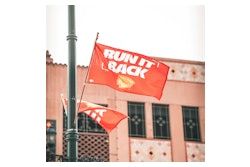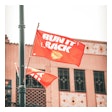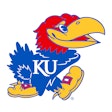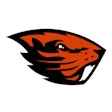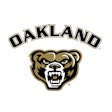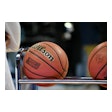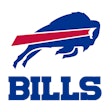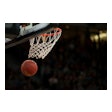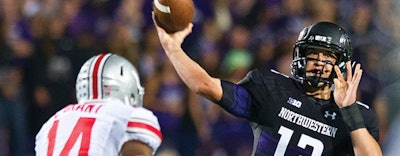
With three marquee home football games in November, Stanford University fully tested the ticket-buying market over two weeks in August.
Putting its own stamp on the reverse-auction concept introduced by Northwestern last basketball season, Stanford rolled out what it calls predictable dynamic pricing. Ticket prices were set based on the median price of tickets available on the secondary market, then lowered to predetermined amounts on predetermined dates. Roughly 700 corner tickets were made available to the Nov. 30 game against Notre Dame at $140 each, for example. Eighty percent of the tickets sold at that price between Aug. 1 and Aug. 5, when the price dropped to $125. Nine percent of the total 700 sold at the lowered price, and the remaining 11 percent sold at $110 beginning Aug. 8.
The same schedule — though starting inventory and pricing figures differed — applied to games against Oregon (Nov. 7) and Cal (Nov. 23), both of which reached a fourth price drop on Aug. 12 without completely exhausting their inventory of 1,050 and 550 tickets, respectively. The 2,300 total tickets sold through predictable dynamic pricing captured an average price of $114, a $28 (32 percent) increase over the average price of single-game tickets offered to season-ticket holders during a presale window not subject to PDP. "It went well," says plan architect David Sertich, director of business strategy for Stanford athletics. "I think the public understood it, and I truly believe it's the fair way of allocating inventory — especially in high demand."
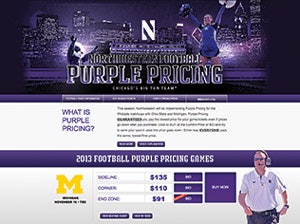 SITE SPECIFIC Purple Pricing got its own homepage this fall, as well as a new bid function.
SITE SPECIFIC Purple Pricing got its own homepage this fall, as well as a new bid function.
BIDS ACCEPTED
Northwestern took a more traditional approach to the reverse auction this fall, analyzing market data on a regular basis and adjusting prices downward accordingly in the full run-up to marquee home games against Ohio State (Oct. 5) and Michigan (Nov. 16). As of this writing, only the Ohio State game had been played, and sideline tickets initially priced at more than $200 dropped only to $195. To put that in perspective, the most expensive ticket Northwestern sold last football season had a face value of $70 (versus Nebraska). The last time Ohio State visited Evanston, Ill., in 2008, tickets were priced at $50.
Do today's fans balk at being asked by Northwestern to pay four times as much to see the Buckeyes as they did only five years ago? "They do understand how the system works," says NU assistant athletic director for marketing Ryan Chenault, pointing to this year's Ohio State game. "The system worked the way it was supposed to. It was a high-demand game, a matchup of top-15 teams, national television. There were individuals who put a premium on being in the stadium for this game, and they were willing to pay for that."
There were tweaks to Northwestern's so-called Purple Pricing, introduced last basketball season by university economists Sandeep Baliga and Jeff Ely. A dedicated website greeted football customers, who — in addition to a "buy now" button — had the new option of bidding on tickets by submitting their name, desired price and quantity, and credit card information. "Now the risk you run if you put in $120 is maybe the seats run out, and we don't lower the price," says Baliga, who with Ely handles the price adjustments based on daily analysis of sales, inventory and the secondary market — as well as the overarching goal of filling Ryan Field. "However, if the price drops to $120, you're going to be first in line to buy the tickets."
All Purple Pricing ticket purchasers are protected by Northwestern's Purple Pledge, which guarantees that no one is undercut price-wise in the process. "Everybody's covered, whether you bid or buy," Baliga says. "If you bought at $138 and the price goes down to $105, then you get refunded $33 per ticket."
There were indeed refunds to certain buyers of Ohio State tickets, according to Chenault. "Because the price actually started out right around $210, $215 for sideline seats, and it did fall over time, those individuals who jumped in right away when we first went on sale were refunded," he said, adding that the actual distribution of refunds is subject to ongoing tweaks, as well. "We were able to do it better than we were for basketball, and we're continuing to find ways to improve that process."
While the athletic department is guarded about its hard revenue figures, it's clear that Purple Pricing allows Northwestern to keep more ticket money than it's giving back — or losing to other sellers. "It's an interesting tool," Chenault says. "It really helps us be fairly priced in the ticket marketplace, and there's a huge opportunity to make sure that dollars are coming back into the school as opposed to being traded on the secondary market."

TRANSPARENT AND FAIR
According to Sertich, Stanford reserves the right to adjust ticket prices upward once its two-week window of predictable drops closes. "It's kind of contradicting our approach, because suddenly it becomes unpredictable pricing," he admits. "My argument was, if we get into the season and we still have 500 tickets to Oregon left and both teams are undefeated, then clearly the secondary market is going to creep up and we should reserve the right to raise our prices accordingly."
The Oregon game eventually sold out, as did Stanford's allotment of Big Game tickets (before it got a portion of Cal's allotment back). The point of predictable pricing was to "take advantage of a two-week period in the preseason where the underlying factors were pretty consistent," Sertich says. "The season hasn't started. Everyone knows that Stanford versus Oregon is going to be a premium game. What's going to shift in those two weeks that suddenly makes us decide that we raise the price, other than some tickets are being sold, which is inevitably going to happen?"
Stanford made efforts to be not only transparent with its price drops, but fair with its starting prices. Using the median price of the secondary market for each game essentially sidestepped any accusations of price gouging, and Sertich was pleased that a good percentage of buyers pulled the trigger at the first price availability. "In theory, you would love to sell them all at the top price, but if you do, you should have set that top price higher, right? You want to cater to the few people who are willing to pay more than the rest first, and then kind of trickle your way into the masses and then clear it — and maximize revenue that way," he says. "I was very happy with the results in that we sold most but not all at that first level."
Happy enough to employ predictable dynamic pricing next season? Sertich anticipates at least revisiting the concept for Stanford's lone marquee home game in 2014 — USC. What is there to lose? "In theory, you can use it as a way to test the market and establish a demand curve for every single game that exists, because if the price hits its floor, and you've sold zero tickets, then all you've wasted is a few days basically trying to capture that upside. If it fails and the market has spoken, then you're kind of back to square one," Sertich says. "But it works a lot better when you know there's high demand and that people are not going to walk away from your model."
The Economists
When economists Sandeep Baliga and Jeff Ely first pitched their reverse-auction ticket sales approach to the Northwestern University athletic department, they were hoping to get a research project out of it. After four games (two each for men's basketball and football) for which the strategy was used, it appears they may get a small business out of it, too.
"It's obvious that there's revenue to be gained from this, and in some ways it's simpler and clearer than dynamic pricing, which is what's normally used," says Baliga, professor of managerial economics and decision sciences in NU's Kellogg School of Management. "And so maybe there's some value we can add to other teams — professional or college. It's sort of morphing a little bit into a consulting project."
While the pair has been in talks with potential clients, their faculty positions dictate that consulting only take up a fraction of their time. That said, they would be the ones making ticket price adjustments for each client based on daily data analysis. "The hard part of this is how to change prices on a daily basis as a function of the data that you see," Baliga says. "You need an economist to really understand that. And that's what Jeff and I are, so that's really our added value in consulting about how to change prices."
— P.S.
The Upsell
 MOVING THE GOAL POST Northwestern analyzed ticket pricing daily in the full run-up to games against Ohio State and Michigan, and made adjustments according to market indicators.
MOVING THE GOAL POST Northwestern analyzed ticket pricing daily in the full run-up to games against Ohio State and Michigan, and made adjustments according to market indicators.
A final selling point, if you will, of reverse auctions is their potential impact on season-ticket sales. At nupurplepricing.com, would-be customers are updated on the going rates of the single game(s) up for auction, but they can also click a button that allows them to buy season tickets.
NU assistant athletic director Ryan Chenault believes Purple Pricing had some influence on the fact that Northwestern established a modern-day school record for football season-ticket sales this season. Says Sandeep Baliga, one of the NU economists who developed Purple Pricing, "One thing that happens is people look at these prices and say, 'Look, instead of paying this, why don't I just get a season ticket? Then I can go to the Ohio State game and the Michigan game, and it costs me less than buying two individual tickets.' "
— P.S.















